How DevSecOps Enables a Shift-Left Approach in Security
- Nitin Yadav
- Blog
About

Industries
- DevSecOps, Shift-Left Security, SquareOps
Share Via
Introduction
Security in software development has traditionally been an afterthought, often addressed only at the end of the development lifecycle. However, this approach has proven to be inadequate in today’s fast-paced, continuously evolving digital landscape. As the frequency and sophistication of cyberattacks increase, there is a growing need for more proactive and integrated security measures. This is where the concept of “shift-left” comes into play, particularly through the implementation of DevSecOps practices.
What is Shift-Left in Security?
The term “shift-left” in software development refers to the practice of moving tasks, such as testing and security, earlier in the development process. In the context of security, shifting left means incorporating security considerations from the very beginning of the software development lifecycle (SDLC). Instead of waiting until the final stages of development to perform security checks, these checks are integrated throughout the entire process, starting from the design phase.
Shifting left in security is a fundamental principle of DevSecOps, a methodology that integrates security practices within the DevOps process. By embedding security into the continuous integration/continuous delivery (CI/CD) pipeline, DevSecOps enables organizations to address security issues earlier and more efficiently.
Understanding DevSecOps
DevSecOps is an evolution of the DevOps philosophy, which emphasizes the collaboration between development and operations teams to deliver software more rapidly and reliably. DevSecOps extends this collaboration to include security teams, ensuring that security is not a separate or isolated function, but an integral part of the entire development process.
In a DevSecOps environment, security becomes everyone’s responsibility. Developers are empowered to write secure code, operations teams are equipped to manage secure deployments, and security teams provide the tools, guidance, and oversight necessary to maintain a strong security posture.
The Benefits of Shifting Left with DevSecOps
Proactive Security Measures
One of the most significant benefits of shifting security left is the ability to implement proactive security measures. By integrating security into the early stages of development, potential vulnerabilities can be identified and mitigated before they become significant issues. This proactive approach reduces the risk of security breaches and ensures that the final product is secure by design.
In traditional development models, security checks are often performed after the code has been written and the application is ready for deployment. This reactive approach can lead to costly and time-consuming fixes if vulnerabilities are discovered late in the process. By shifting left, DevSecOps enables teams to address security concerns before they escalate, saving both time and resources.
Improved Collaboration and Communication
DevSecOps fosters a culture of collaboration and communication between development, operations, and security teams. This collaboration is essential for identifying and addressing security risks early in the development process. By working together, these teams can share knowledge, align on goals, and ensure that security is a shared responsibility.
In a traditional development environment, security teams often work in isolation, only becoming involved in the later stages of the SDLC. This siloed approach can lead to communication gaps and misunderstandings, resulting in security vulnerabilities being overlooked or inadequately addressed. DevSecOps breaks down these silos, creating a more cohesive and collaborative approach to security.
Faster Time-to-Market
One of the primary goals of DevOps is to accelerate the software development process, enabling organizations to deliver new features and updates to market more quickly. However, speed should not come at the expense of security. DevSecOps ensures that security is integrated into the CI/CD pipeline, allowing teams to maintain a fast pace of development without compromising on security.
By shifting left, security checks and testing are automated and integrated into the development process. This automation reduces the time required for manual security reviews and enables teams to identify and fix vulnerabilities earlier in the process. As a result, organizations can deliver secure software more quickly, gaining a competitive edge in the market.
Cost Savings
Addressing security issues early in the development process can lead to significant cost savings. The longer a vulnerability goes undetected, the more expensive it becomes to fix. According to research by the Ponemon Institute, the cost of fixing a security issue discovered in production can be up to 30 times higher than fixing it during the design phase.
DevSecOps helps organizations avoid these costly fixes by identifying and addressing vulnerabilities earlier in the SDLC. Automated security tools integrated into the CI/CD pipeline can catch security issues in real-time, allowing teams to remediate them before they escalate. This proactive approach not only reduces costs but also minimizes the risk of security breaches and their associated financial and reputational damage.
Continuous Security Monitoring
In a DevSecOps environment, security is not a one-time effort but a continuous process. Automated security tools are integrated into the CI/CD pipeline, providing continuous monitoring and testing of the codebase. This continuous monitoring ensures that security vulnerabilities are identified and addressed as soon as they arise, rather than waiting for scheduled security reviews.
Continuous security monitoring also enables teams to respond quickly to emerging threats. As new vulnerabilities are discovered, security teams can rapidly deploy patches and updates to protect their applications. This agility is essential in today’s threat landscape, where cyberattacks are becoming increasingly sophisticated and frequent.
Enhanced Compliance and Governance
For many organizations, compliance with industry regulations and standards is a critical aspect of their security strategy. DevSecOps can help organizations achieve and maintain compliance by integrating automated compliance checks into the development process.
Automated tools like OpenSCAP, Chef InSpec, and AWS Config can be used to enforce compliance policies and standards across the entire infrastructure. By shifting these checks left, organizations can identify and address compliance issues early in the development process, reducing the risk of non-compliance in production.
Additionally, DevSecOps provides greater visibility into the security posture of the organization. Automated reporting and auditing tools enable teams to track and document compliance efforts, making it easier to demonstrate compliance during audits and assessments.
Building a Security-First Culture
Shifting security left is not just about implementing new tools and processes; it’s also about creating a culture that prioritizes security. In a DevSecOps environment, security is a shared responsibility that involves everyone in the organization, from developers to operations to management.
Building a security-first culture requires ongoing training and education for all team members. Developers need to be equipped with the knowledge and skills to write secure code, while operations teams need to understand how to deploy and manage secure infrastructure. Security teams play a crucial role in providing this training and ensuring that security best practices are followed throughout the SDLC.
In addition to training, organizations can foster a security-first culture by recognizing and rewarding security-conscious behavior. Celebrating security achievements, such as the identification and remediation of vulnerabilities, can reinforce the importance of security and encourage others to follow suit.
Integration with Agile and DevOps Practices
DevSecOps is designed to integrate seamlessly with Agile and DevOps practices, enabling organizations to maintain a fast pace of development while ensuring security. Agile methodologies emphasize iterative development and continuous improvement, which aligns well with the principles of DevSecOps.
By integrating security into Agile sprints, organizations can ensure that security is considered at every stage of the development process. This integration allows teams to address security issues incrementally, rather than waiting until the end of the sprint or release cycle.
Similarly, DevSecOps complements DevOps practices by automating security tasks and integrating them into the CI/CD pipeline. This integration enables organizations to achieve the speed and agility of DevOps without sacrificing security.
Best Practices for Implementing DevSecOps and Shifting Left
Develop a Comprehensive Security Strategy
The first step in implementing DevSecOps is to develop a comprehensive security strategy that aligns with your business objectives. This strategy should be informed by a thorough risk assessment that identifies vulnerabilities and areas for improvement. By establishing a clear roadmap with measurable security objectives and timelines, you can ensure that your security posture evolves in tandem with your organizational goals.
Start with a Security Assessment
Before diving into the DevSecOps implementation, it’s essential to conduct a thorough security assessment of your existing development processes. This assessment helps in identifying any security gaps, vulnerabilities, and areas that require improvement. By establishing this baseline, you can effectively measure the impact and success of your DevSecOps practices as they are integrated into your workflows.
Implement Continuous Integration/Continuous Deployment (CI/CD)
A well-structured CI/CD pipeline is the backbone of successful DevSecOps. Integrating security tools and practices into every stage of the CI/CD pipeline ensures that security is built into the development process from the outset. This involves automating tests, conducting code reviews, and implementing secure deployment practices to maintain a secure and efficient development lifecycle.
Automate Security Testing
Automation is a crucial element in DevSecOps, particularly when it comes to security testing. By automating tests such as Static Application Security Testing (SAST), Dynamic Application Security Testing (DAST), and dependency scanning, organizations can ensure that security checks are continuously performed without slowing down the development process. Integrating these automated security tests into the CI/CD pipeline enables consistent and reliable security validation.
Monitor and Measure Security Performance
To ensure the ongoing success of your DevSecOps practices, it is vital to continuously monitor and measure security performance. Implement tools that provide real-time insights into the effectiveness of your security measures and track key performance indicators (KPIs). Regularly analyzing this data allows your team to identify areas for improvement, make informed decisions, and ensure that your security posture evolves alongside your development processes.
Establish a Security-First Culture
Creating a security-first culture within your organization is critical for the long-term success of DevSecOps. This involves fostering an environment where security is prioritized by everyone, from developers to operations teams. Recognizing and rewarding security-conscious behavior, promoting continuous improvement, and integrating security as a core aspect of all development activities ensures that your organization remains vigilant and resilient against security threats.
Top Tools to enable DevSecOps in your CI/CD
- Jenkins: Jenkins is a widely used open-source automation server that enables DevOps teams to build, test, and deploy applications efficiently. It integrates with numerous security plugins that can be used to perform static code analysis, vulnerability scanning, and compliance checks as part of the CI/CD pipeline, ensuring security is embedded throughout the development lifecycle.
- GitLab CI: GitLab CI is a continuous integration and delivery tool integrated within GitLab. It enables automated testing, security scanning, and deployment. GitLab’s security features include Static Application Security Testing (SAST), Dynamic Application Security Testing (DAST), dependency scanning, and container scanning, all embedded directly into the CI/CD pipeline.
- SonarQube: SonarQube is an open-source platform for continuous inspection of code quality. It performs static code analysis to detect bugs, code smells, and security vulnerabilities. SonarQube integrates seamlessly into CI/CD pipelines, providing developers with real-time feedback on code quality and security, enabling early detection of issues.
- Snyk: Snyk is a developer-first security tool that focuses on identifying and fixing vulnerabilities in open-source dependencies, container images, and infrastructure as code (IaC). It integrates with CI/CD pipelines, enabling automated vulnerability scanning and providing actionable remediation suggestions to secure applications early in the development process.
- WhiteSource: WhiteSource is a security tool that automates the detection and remediation of vulnerabilities in open-source libraries. It integrates with CI/CD tools to continuously monitor and secure code throughout the software development lifecycle. WhiteSource provides real-time alerts and detailed reports, helping teams maintain secure codebases.
- Aqua Security: Aqua Security provides comprehensive security for containerized applications, from development through to production. It offers features like container image scanning, runtime protection, and compliance enforcement. Aqua integrates with CI/CD pipelines to ensure that security policies are enforced before containers are deployed, reducing the risk of vulnerabilities in production environments.
- Checkmarx: Checkmarx is a Static Application Security Testing (SAST) tool that helps developers identify and fix security vulnerabilities in their code. It integrates with CI/CD tools to perform security scans as part of the build process, providing detailed reports and remediation guidance to ensure that applications are secure before deployment.
- OWASP ZAP: OWASP ZAP (Zed Attack Proxy) is an open-source Dynamic Application Security Testing (DAST) tool designed to find security vulnerabilities in web applications. It can be integrated into CI/CD pipelines to automate security testing during the build process, helping teams identify and fix vulnerabilities before they reach production.
- HashiCorp Vault: HashiCorp Vault is a tool for securely managing secrets, such as API keys, passwords, and certificates. It integrates with CI/CD pipelines to provide dynamic secrets management, ensuring that sensitive data is securely stored and accessed during the build and deployment processes, reducing the risk of credential leaks.
- Trivy: Trivy is a simple and comprehensive vulnerability scanner for containers and other artifacts. It scans for vulnerabilities in operating system packages and application dependencies. Trivy integrates with CI/CD pipelines to automate security scanning, providing developers with fast feedback on potential security issues in their code.
- Terraform: Terraform is an infrastructure as code (IaC) tool that allows users to define and provision infrastructure across multiple cloud providers. With modules and policies that enforce security best practices, Terraform can be integrated into CI/CD pipelines to ensure that infrastructure is securely deployed and managed.
- Azure DevOps: Azure DevOps provides a set of development tools for software development, including CI/CD, version control, and application monitoring. It integrates security checks directly into the CI/CD pipeline, offering features such as automated testing, vulnerability scanning, and compliance management to secure applications throughout the development lifecycle.
Conclusion
The shift-left approach in security, enabled by DevSecOps, offers a proactive and integrated solution to the security challenges faced by modern organizations. By embedding security into the development process from the outset, organizations can reduce the risk of vulnerabilities, improve collaboration between teams, and deliver secure software more quickly.
DevSecOps not only enhances security but also aligns with the goals of Agile and DevOps practices, enabling organizations to maintain speed and agility while ensuring robust security. As more organizations adopt DevSecOps, the shift-left approach will become the standard for secure software development.
At SquareOps, we specialize in helping organizations implement DevSecOps practices that enable a shift-left approach to security. Whether you’re just starting your DevSecOps journey or looking to optimize your existing processes, we’re here to help you build a secure and efficient software development lifecycle. Contact us today to learn more about how we can support your DevSecOps initiatives.
Frequently asked questions
The shift-left approach refers to the practice of moving security activities earlier in the software development lifecycle (SDLC). Instead of addressing security concerns at the end of development, security is integrated from the very beginning, ensuring that issues are identified and addressed proactively.
DevSecOps integrates security into the DevOps process, embedding security practices into every stage of the SDLC. By incorporating security checks into the CI/CD pipeline, DevSecOps allows teams to address security vulnerabilities early, preventing issues from escalating later in the process.
Shifting left allows teams to detect and resolve vulnerabilities earlier, reduces development time and costs, improves collaboration between development, operations, and security teams, and ensures a faster, more secure delivery of software.
DevSecOps encourages collaboration between developers, security experts, and operations teams. By making security everyone’s responsibility, it improves communication, knowledge sharing, and alignment on security goals throughout the development lifecycle.
Identifying security vulnerabilities early in the development process is far less costly than fixing them after deployment. According to studies, fixing security issues after production can be up to 30 times more expensive than addressing them during the design or coding phase.
Tools commonly used in DevSecOps include SonarQube for static code analysis, OWASP ZAP for dynamic application security testing, Snyk for open-source vulnerability scanning, Jenkins for CI/CD automation, and Aqua Security for container security.
In DevSecOps, security is continuously monitored through automated tools integrated into the CI/CD pipeline. This provides ongoing visibility into the security posture, identifies new vulnerabilities as they emerge, and ensures that patches and updates are deployed promptly.
Automation plays a key role by running security tests continuously during development. Automated security scans (like Static Application Security Testing [SAST] and Dynamic Application Security Testing [DAST]) can detect issues without slowing down the development process, making security checks an ongoing and integral part of the workflow.
Success can be measured by tracking key performance indicators (KPIs) such as the number of vulnerabilities detected early in the SDLC, time saved through automation, reduced remediation costs, faster release cycles, and improved compliance with security standards.
Security testing in a shift-left DevSecOps strategy is integrated early in the development process. This involves automated static and dynamic security testing, dependency scanning, and code reviews as part of the CI/CD pipeline. By identifying vulnerabilities early, teams can remediate issues before they escalate.
Related Posts
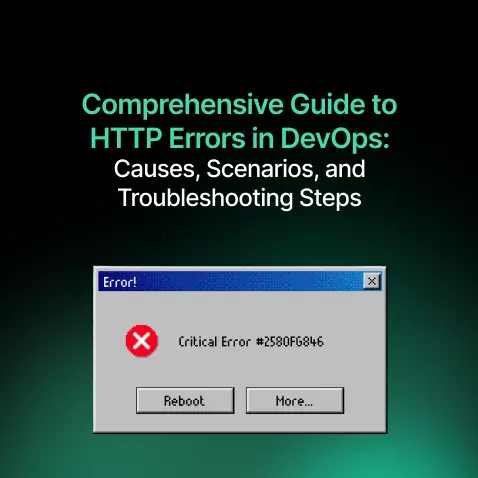
Comprehensive Guide to HTTP Errors in DevOps: Causes, Scenarios, and Troubleshooting Steps
- Blog
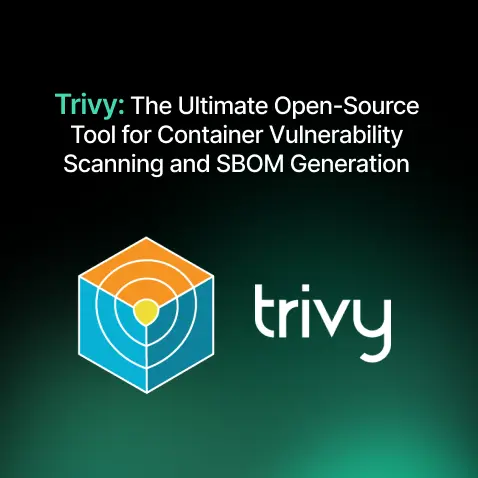
Trivy: The Ultimate Open-Source Tool for Container Vulnerability Scanning and SBOM Generation
- Blog
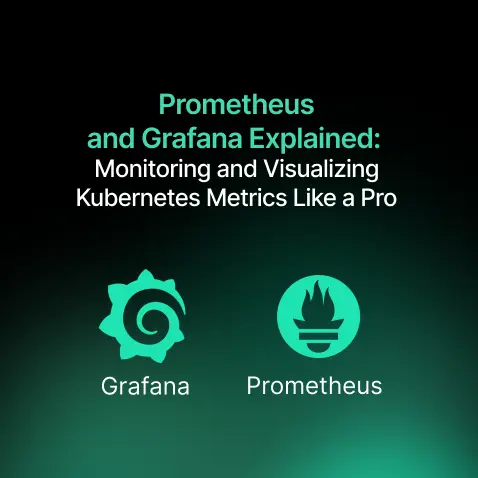
Prometheus and Grafana Explained: Monitoring and Visualizing Kubernetes Metrics Like a Pro
- Blog
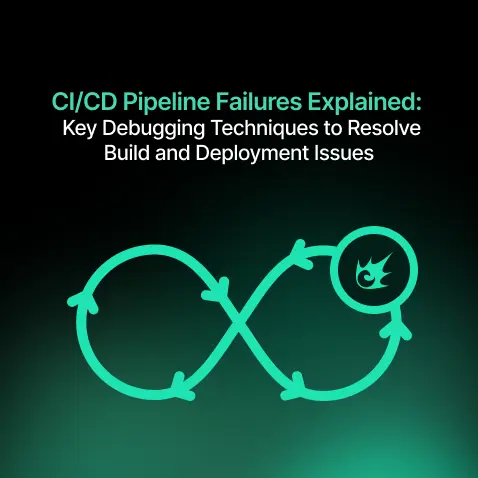
CI/CD Pipeline Failures Explained: Key Debugging Techniques to Resolve Build and Deployment Issues
- Blog
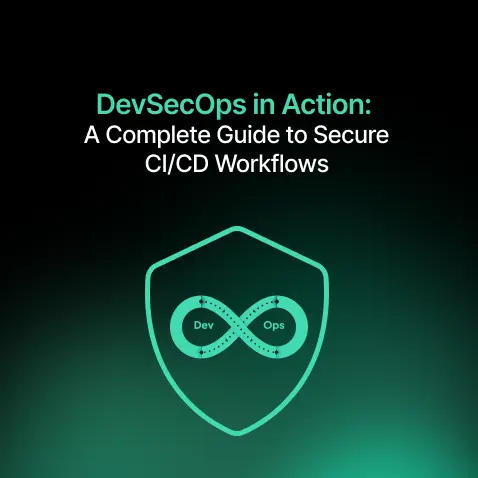
DevSecOps in Action: A Complete Guide to Secure CI/CD Workflows
- Blog
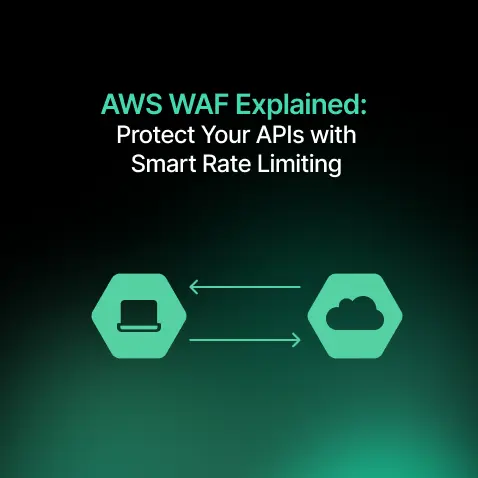
AWS WAF Explained: Protect Your APIs with Smart Rate Limiting
- Blog

